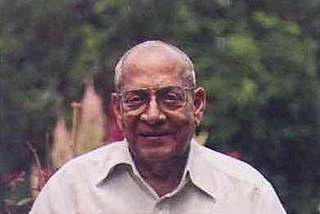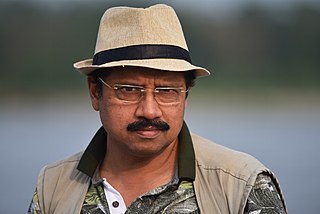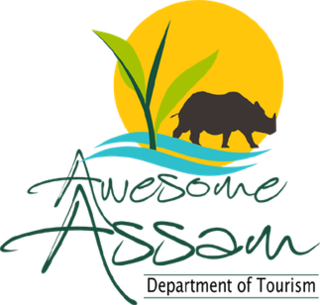
Assam is a state in northeastern India, south of the eastern Himalayas along the Brahmaputra and Barak River valleys. Assam covers an area of 78,438 km2 (30,285 sq mi). It is the second largest state in northeastern India by area and the largest in terms of population, with more than 31 million inhabitants. The state is bordered by Bhutan and Arunachal Pradesh to the north; Nagaland and Manipur to the east; Meghalaya, Tripura, Mizoram and Bangladesh to the south; and West Bengal to the west via the Siliguri Corridor, a 22-kilometre-wide (14 mi) strip of land that connects the state to the rest of India. Assamese and Boro for Bodoland Territorial Region are the official languages of Assam. Meitei (Manipuri) is recognised as an additional official language in Hojai district and for the Barak Valley region, alongside Bengali, which is also an official language in the Barak Valley.
Tourism in India is 4.6% of the country's gross domestic product (GDP). Unlike other sectors, tourism is not a priority sector for the Government of India. The World Travel and Tourism Council calculated that tourism generated ₹13.2 lakh crore (US$160 billion) or 5.8% of India's GDP and supported 32.1 million jobs in 2021. Even though, these numbers were lower than the pre-pandemic figures; the country's economy witnessed a significant growth in 2021 after the massive downturn during 2020. The sector is predicted to grow at an annual rate of 7.8% to ₹33.8 lakh crore (US$400 billion) by 2031. India has established itself as the 5th largest global travel healthcare destination with an estimated market size of around $9 billion in 2019, out of the total global travel healthcare industry of $44.8 billion(2019). In 2014, 184,298 foreign patients travelled to India to seek medical treatment.

Kaziranga National Park is a national park in the Golaghat, Sonitpur, Biswanath and Nagaon districts of the state of Assam, India. KNP has 5 ranges. The park, which hosts two-thirds of the world's Indian rhinoceroses, is a UNESCO World Heritage Site. According to a March 2018 census conducted jointly by the Forest Department of the Government of Assam and some recognized wildlife NGOs, the rhino population in Kaziranga National Park is 2,613. It comprises 1,641 adult rhinos and 385 calves.

Nagaon district is an administrative district in the Indian state of Assam. At the time of the 2011 census it was the most populous district in Assam, before Hojai district was split from it in 2016.

Jorhat is an administrative district of the Indian state of Assam situated in the central part of the Brahmaputra Valley. The district is bounded by Majuli on north, Nagaland state on the south, Sivasagar on the east and Golaghat on the west. On the north of the district, the river Brahmaputra forms the largest riverine island of the world. The administrative seat is at Jorhat city.
Mark Roland Shand was a British travel writer and conservationist, as well as the brother of Queen Camilla. Shand was the author of four travel books and as a BBC conservationist, appeared in documentaries related to his journeys, most of which centered on the survival of elephants. His book Travels on My Elephant became a bestseller and won the Travel Writer of the Year Award at the British Book Awards in 1992. He was the chairman of Elephant Family, a wildlife foundation, which he co-founded in 2002.
The history of Kaziranga National Park in the Golaghat and Nagaon districts of the state of Assam, India, can be traced back to the beginning of the twentieth century, in 1904. It now is a World Heritage Site and hosts two-thirds of the world's Great One-horned Rhinoceroses, tigers, and many other endangered animals.
Kaziranga National Park in India has a good conservation history, especially due to its efficient management policies. In spite of the efficient conservation policies there are some loopholes in the conservation policies.

Robin Banerjee was a wildlife expert, environmentalist, painter, photographer and documentary filmmaker who lived at Golaghat in the Indian state of Assam.

Kaziranga National Park is an Indian national park and a World Heritage Site in Golaghat and Nagaon districts of Assam, India. It is refuge for the world's largest population of Great One-horned Rhinoceros. The park has many elephant, water buffalo and swamp deer. It is recognized as an Important Bird Area by BirdLife International for conservation of avifaunal species. The park has achieved notable progress in wildlife conservation despite several constraints.
Kaziranga National Park is an Indian national park and a World Heritage Site in Golaghat and Nagaon districts of Assam, India. It is refuge for the world's largest population of great one-horned rhinoceros. Kaziranga has the highest density of tigers among protected areas in the world and was declared a Tiger Reserve in 2006. The park has large breeding populations of elephant, wild Asiatic water buffalo and swamp deer. Kaziranga is recognized as an Important Bird Area by Birdlife International for conservation of avifaunal species. The park has achieved notable progress in wildlife conservation with respect to other protected areas in India.Kaziranga was declared a Tiger Reserve in 2006

Assam is the main and oldest state in the North-East Region of India and as the gateway to the rest of the Seven Sister States. The land of red river and blue hills, Assam comprises three main geographical areas: the Brahmaputra Valley which stretching along the length of the Brahmaputra river, the Barak Valley extending like a tail, and the intervening Karbi Plateau and North Cachar Hills. Assam shares its border with Meghalaya, Arunachal Pradesh, Nagaland, Manipur, Tripura, Mizoram and West Bengal; and there are National Highways leading to their capital cities. It also shares international borders with Bhutan and Bangladesh and is very close to Myanmar. In ancient times Assam was known as Pragjyotisha or Pragjyotishpura, and Kamarupa.

Anwaruddin Choudhury is an Indian ornithologist and mammalogist noted for his work in wildlife conservation across North-East India. He is also noted for his expertise on the fauna of North-East India. He has served in various governmental roles, including as Deputy Commissioner in Assam and as Secretary in the state government, ultimately retiring as the Divisional Commissioner of Barak Valley in August 2019. Choudhury is also the Honorary Chief Executive and a trustee of the Rhino Foundation for Nature in North-East India Born into a family with a strong educational background, Choudhury was raised in Shillong. He attended several schools, ultimately completing his matriculation in 1974. He initially pursued science but later earned a Bachelor of Arts with Honours in Geography, followed by a Master's degree from Gauhati University, where he also received a gold medal for his academic performance. He completed his PhD in 1989, focusing on primate studies in Assam.

Aaranyak is a leading wildlife NGO based in Guwahati. It was founded by Bibhab Kumar Talukdar. It is a Scientific, Industrial Research and frontline environmental organization of India. It works all over the eastern Himalayan region on nature conservation, natural resources management, climate change, disaster management and livelihood enhancement of marginalized communities through research, education and advocacy.

Laokhowa Wildlife Sanctuary is a wildlife sanctuary located in the state of Assam in India covering 70.13 km2 (27.08 sq mi) on the south bank of the Brahmaputra River in Nagaon district.

Bura Chapori Wildlife Sanctuary is a protected area located in the state of Assam in India. This wildlife sanctuary covers 44.06 km2, on the south bank of the Brahmaputra River in Sonitpur district. The area was declared a Reserved forest in 1974, it became a sanctuary in 1995. It is located 40 km from Tezpur town and 181 km away from Guwahati.It forms an integral part of the Laokhowa-Burachapori eco-system and is a notified buffer of the Kaziranga Tiger reserve.
Assam – 16th largest, 15th most populous and 26th most literate state of the 28 states of the democratic Republic of India. Assam is at 14th position in life expectancy and 8th in female-to-male sex ratio. Assam is the 21st most media exposed states in India. The Economy of Assam is largely agriculture based with 69% of the population engaged in it. Growth rate of Assam's income has not kept pace with that of India's during the Post-British Era; differences increased rapidly since the 1970s. While the Indian economy grew at 6 percent per annum over the period of 1981 to 2000, the same of Assam's grew only by 3.3 percent.

Assam Tourism Development Corporation or ATDC is a state owned corporation of Assam, India. It deals with tourism services and development as a part of the Assam Tourism Department along with the Directorate of Tourism. The State Govt. of Assam set up the corporation on 9 June 1988. The ATDC is headquartered at Guwahati and has district offices across Assam. Its official slogan is "Awesome Assam."
The Brahmaputra floods refers to a catastrophic flood event that occurred in 2012 along the Brahmaputra River and its tributaries, as well as in subsequent years.












